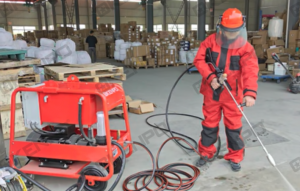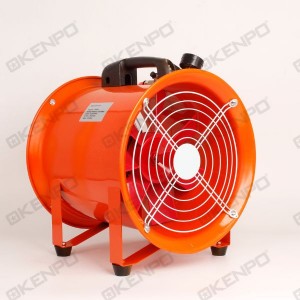Cleaning the cargo holds is an essential task in maritime operations, significantly contributing to the ship’s integrity, ensuring safety, and preventing contamination of future cargoes. Nevertheless, this process can present numerous challenges, and errors may result in serious repercussions. In this article, we will examine five common mistakes to avoid when cleaning cargo holds, ensuring that you adopt best practices for effective maintenance.
1. Overlooking Safety Protocols
One of the most significant errors that crew members commit during the cleaning of cargo holds is overlooking safety protocols. Working in confined spaces, such as cargo holds, entails various risks, including slips, trips, and exposure to hazardous materials.
Best Practices:
1. Always perform a comprehensive risk assessment prior to commencing cleaning operations.
2. Ensure that all crew members are provided with personal protective equipment (PPE), such as gloves, goggles, and respirators, if required.
3. Establish a safety plan that encompasses emergency procedures and communication methods.
By emphasizing safety, you can greatly diminish the likelihood of accidents and foster a safer working environment.
2. Utilizing Inappropriate Cleaning Agents
Another frequent error is the application of unsuitable cleaning agents for the specific type of residue found in the cargo hold. Various cargoes leave distinct types of residues, including oils, chemicals, or food particles, and employing incorrect cleaning solutions can lead to ineffective cleaning or potentially harm the ship’s materials.
Best Practices:
1. Determine the type of residue prior to selecting cleaning agents. For instance, utilize degreasers for oil residues and specialized cleaners for chemical residues.
2. Ensure that the cleaning agents are compatible with the materials present in the cargo hold, such as stainless steel or aluminum.
3. Always adhere to the manufacturer’s guidelines for dilution and application.
By selecting the correct cleaning agents, you can improve the efficiency of your cleaning process and safeguard the integrity of the cargo hold.
3. Neglecting to Inspect and Employ Proper Cleaning Techniques
Numerous crews proceed directly to cleaning without performing a thorough inspection of the cargo hold. This neglect can result in overlooked areas that require special attention and may also miss structural issues that necessitate repair. Furthermore, improper cleaning techniques can lead to ineffective cleaning and even damage to the cargo hold.
Best Practices:
1. Perform a comprehensive inspection of the cargo hold prior to cleaning. Look for indications of corrosion, leaks, or structural damage, and document any areas that require special treatment.
2. Utilize suitable tools and equipment for the task. High-pressure water blasters, for instance, can be effective for stubborn residues but should be used with caution to prevent surface damage.
3. Adhere to the correct methods for applying cleaning agents, ensuring uniform coverage and allowing sufficient contact time for effective cleaning.
A meticulous inspection followed by appropriate cleaning techniques facilitates a focused approach to cleaning and maintenance, ensuring that no significant issues are overlooked.
4. Neglecting Ventilation
Ventilation is frequently disregarded during the cleaning of cargo holds, yet it is vital for both safety and efficiency. Inadequate ventilation can result in the buildup of harmful fumes or vapors from cleaning agents and residues, which poses health hazards to crew members.
Best Practices:
1. Ensure sufficient ventilation in the cargo hold during cleaning activities. Utilize fans or blowers to enhance airflow and disperse any harmful fumes.
2. Regularly monitor air quality, particularly when using potent cleaning agents that may emit volatile organic compounds (VOCs).
3. Establish entry and exit protocols to sustain airflow while ensuring the safety of the crew.
By emphasizing ventilation, you can foster a safer working environment and enhance the overall effectiveness of the cleaning process.
5. Omitting Post-Cleaning Inspections and Documentation
Following cleaning, numerous crews fail to perform a post-cleaning inspection, which is essential for confirming that the task has been completed effectively. This neglect can result in residual contamination and potential complications with future cargoes. Moreover, the absence of documentation regarding cleaning procedures can obstruct accountability and hinder improvements.
Best Practices:
1. Perform a comprehensive inspection after cleaning to verify that all residues have been eliminated and that surfaces are clean and dry. Check for any overlooked areas or spots that may need further cleaning.
2. Keep a meticulous log of cleaning activities, including dates, cleaning agents utilized, inspection outcomes, and any issues encountered. Documenting this information can assist in assessing the effectiveness of cleaning practices over time and facilitate necessary adjustments.
By executing post-cleaning inspections and maintaining detailed records, you can ensure that the cargo hold is prepared for its next load and uphold high cleanliness standards.
Conclusion
Cleaning the cargo holds is an essential component of maritime operations that demands meticulous attention to detail and strict adherence to established best practices. By steering clear of these five prevalent errors—disregarding safety protocols, utilizing unsuitable cleaning agents, neglecting to inspect and apply appropriate cleaning techniques, failing to ensure proper ventilation, and omitting post-cleaning inspections and documentation—you can significantly improve the efficacy of your cleaning endeavors and guarantee a safe and efficient operation.
Adopting these best practices not only safeguards the integrity of your vessel but also upholds high standards of safety and compliance, ultimately aiding in the success of your maritime operations. For additional information on effective cargo hold cleaning solutions, consider investigating products and resources offered by reputable manufacturers such as ChutuoMarine.
Post time: Sep-23-2025








